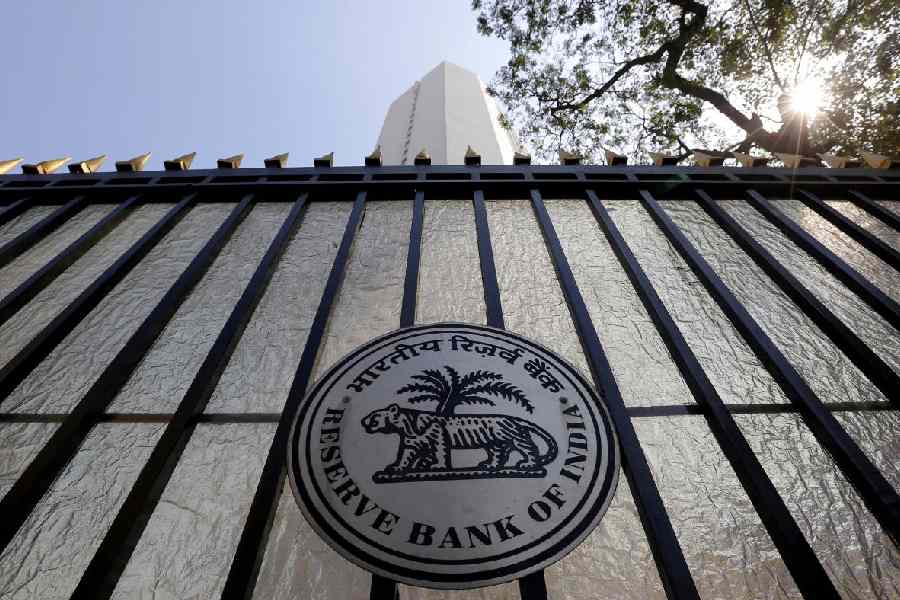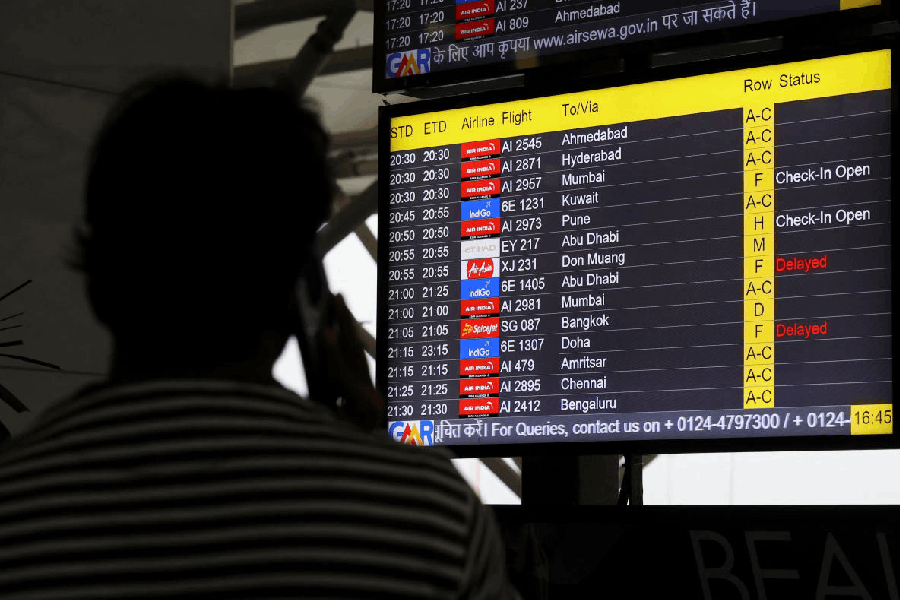The Reserve Bank of India has lowered its GDP growth expectation for 2025-26 by 20 basis points to 6.5 per cent, with the unfurling tariff war weighing in on the country’s exports even as the demand scenario back home remains strong.
Following the conclusion of the monetary policy meeting on Wednesday, RBI governor Sanjay Malhotra said that India’s rural demand continues to remain healthy while urban consumption is gradually picking up with an uptick in discretionary spending. Investment activity is also expected to gain traction with higher capacity utilisation and higher capital spending by the government on infrastructure, and supported by healthy balance sheets of banks and corporate houses.
However, headwinds from the global trade disruptions continue to pose downward risks for merchandise exports.
“First and foremost, uncertainty in itself dampens growth by affecting investment and spending decisions of businesses and households. Second, the dent on global growth due to trade frictions will impede domestic growth. Third, higher tariffs shall have a negative impact on net exports. There are, however, several known unknowns —the impact of relative tariffs, the elasticities of our export and import demand, and the policy measures adopted by the government, including the proposed Foreign Trade Agreement with the USA, to name a few,” Malhotra said.
“This downward revision essentially reflects the impact of global trade and policy uncertainties,” the RBI governor said.
Benign inflation
Malhotra said that the outlook for food inflation has turned “decisively positive” with uncertainties regarding rabi crops having abated considerably, and the second advance estimates point to a record wheat production and higher production of key pulses over the last year. Along with robust kharif arrivals, this is expected to set the stage for a durable softening of food inflation.
“Sharp decline in inflation expectations in our latest survey for three months and one year ahead would also help anchor inflation expectations, going ahead. Furthermore, the fall in crude oil prices augurs well for the inflation outlook,” Malhotra said.
However, the RBI governor pointed out two major risks to inflation. “On the upside, uncertainties may lead to possible currency pressures and imported inflation. On the downside, the slowdown in global growth could entail further softening of commodity and crude oil prices, putting downward pressure on inflation,” he said.
Economists said that the RBI’s lower estimate for GDP growth was not unexpected.
“We think there would be material downward risk to their growth forecast — to the tune of around 50-70 basis points. This would emanate from a much higher risk of a US/global recession if these global tariffs are maintained, while domestic private economic agents stay largely absent,” said Madhavi Arora, chief economist, Emkay Global Financial Services.
“The downside risks to growth in major economies are now considered a base case scenario. In our base case, we project India to grow at 6.5 per cent with risks tilted to the downside and an inflation rate of 4.3 per cent in fiscal 2026,” said Dharmakirti Joshi, chief economist of Crisil.
“The rate cut was expected as heightened uncertainties brewing globally could impact India’s growth trajectory. India would like to see its domestic demand remain resilient. A lot of the resilience hinges on how consumption spending increases going forward. There has been a tax stimulus that is expected to boost growth by 0.6 to 0.7 per cent. But there are risks of India’s trade surplus with the US coming down, shaving off close to 0.22 to 0.3 per cent of GDP. With this rate cut, the RBI is hinting at boosting credit growth as well as improving liquidity,” said Rumki Majumdar, economist, Deloitte India.
Shifting stance
The RBI governor also took time to explain a shift in the policy stance of the regulator to “accommodative” from “neutral”, giving a clear indication that the RBI is likely to continue with the downward rate cycle to support economic growth.
“In our context, the stance of monetary policy signals the intended direction of policy rates going forward. Accordingly, with respect to the policy rate, which is the mandate of the MPC, today’s change in stance from ‘neutral’ to ‘accommodative’ means that going forward, absent any shocks, the MPC is considering only two options — status quo or a rate cut,” Malhotra said.
However, he clarified that the MPC’s stand should not be directly associated with liquidity conditions.
“We expect two more rate cuts in 2025, with the next rate cut likely to be delivered in the June policy. As liquidity conditions continue to improve, expected to average above neutral in the current quarter, transmission of rate cuts to money market rates and for deposit rates is also likely to increase,” said Sakshi Gupta, principal economist, HDFC Bank.
“We see scope for an additional 75-100 basis points of rate cuts in the year ahead, depending on the scale of global slowdown,” said Upasna Bhardwaj, chief economist, Kotak Mahindra Bank.
“While one remains watchful of global growth concerns, the baseline expectation is that of at least another 50-basis points repo rate cut by the RBI during FY26, potentially in a front-loaded fashion,” said Siddhartha Sanyal, chief economist and head of research, Bandhan Bank.










